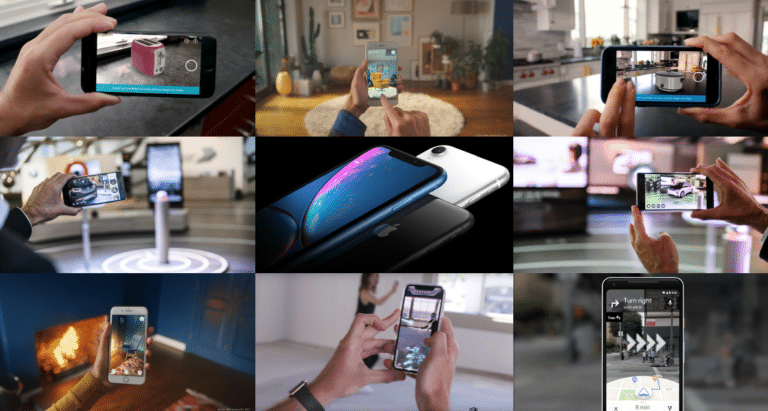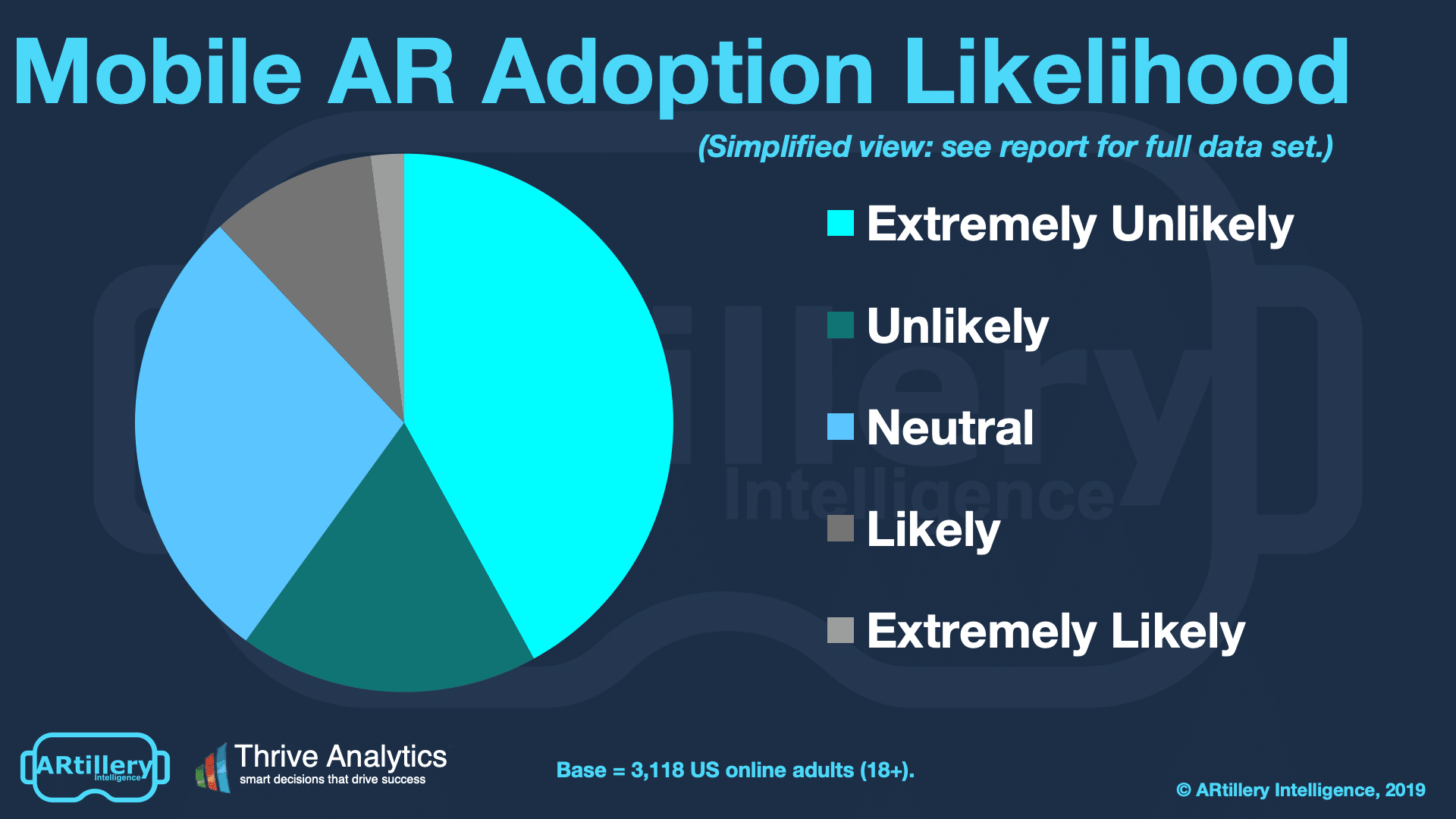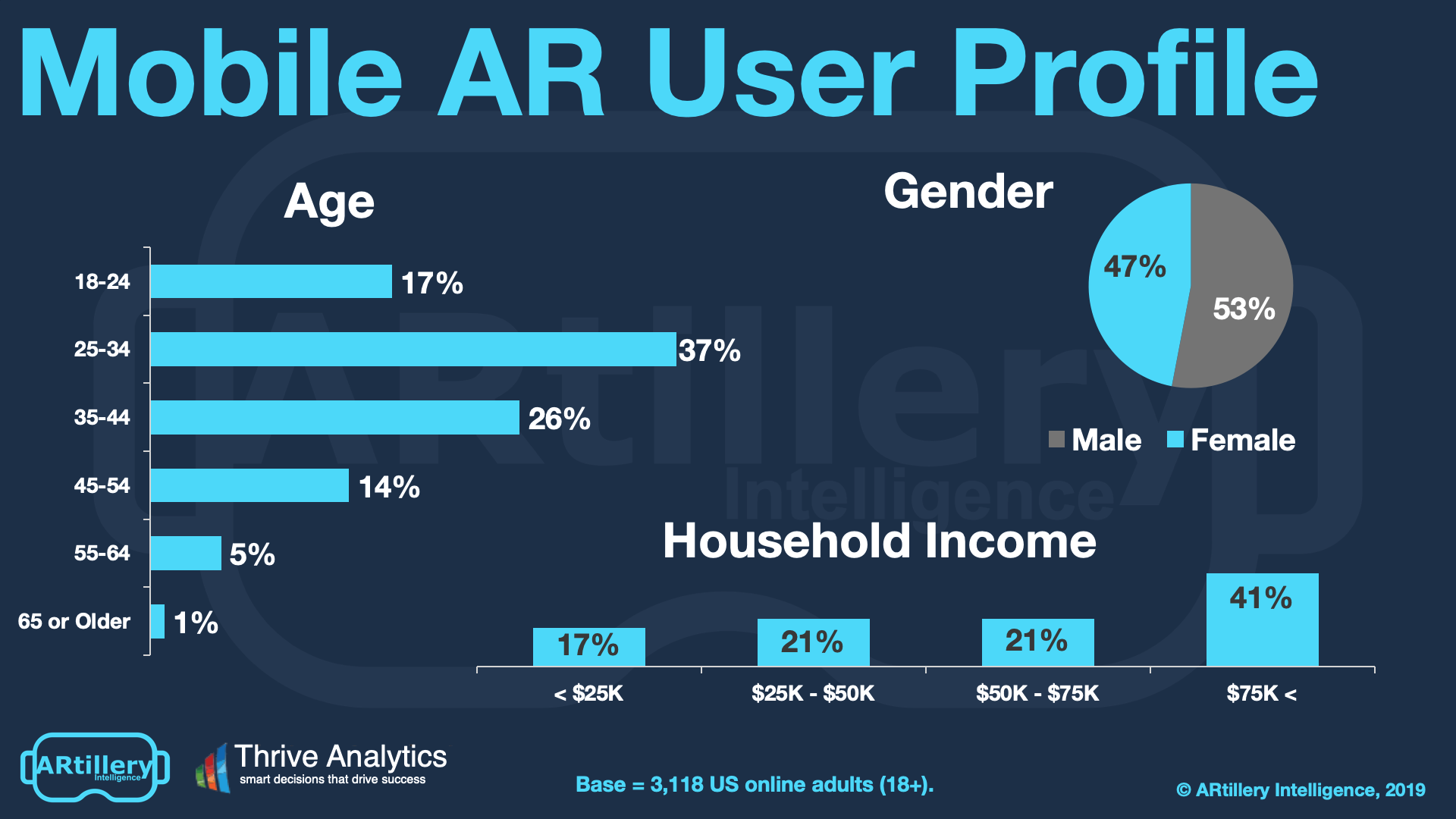
This post is adapted from ARtillery Intelligence’s latest report, Mobile AR Usage & Consumer Attitudes. It includes some of its data and takeaways. More can be previewed here and subscribe for the full report.
How do consumers feel about mobile AR? Who’s using it? How often? And what do they want to see next? More importantly, what are non-users’ reasons for disinterest? And how can app developers and anyone else building mobile AR apps optimize product strategies accordingly?
These are questions we set out to answer. Working with Thrive Analytics, ARtillery Intelligence wrote questions to be presented to more than 3000 U.S. adults. The results are in and analyzed in the latest ARtillery Intelligence report. Today we dive into consumers’ reasons for disinterest.

The Bad News
Continuing from the AR satisfaction levels examined last week, positive results are offset by negative signals from AR non-users. Specifically, 53 percent report that their reason for disinterest is “just not interested.” This discouraging sentiment represents a key challenge for AR.
Adding to that, 28 percent report confusion with mobile AR. That includes “I wouldn’t know where to look,” (19 percent) and “I’m not sure if my phone is compatible” (8 percent). 15 percent reported interest but not enough to go through the trouble of looking for and downloading AR apps.
As for the “just not interested” crowd, that’s perhaps the most damning of the non-user responses. Not only is it supportive of more consumer education, like the above points, but it highlights a key challenge for immersive tech. Because it’s so visual and visceral, you have to see it to believe it.
In other words, the variance in satisfaction for users and non-users underscores AR’s marketing challenge. People like it after they get a taste… but you have to get them to taste it first. And with AR, it’s difficult to capture the experience with traditional marketing or 2d media.
This will alleviate over time as mobile AR naturally assimilates into the consumer population through viral and other means. Meanwhile, adoption for any given app can be accelerated through gamification and social features that tap into network effect, such as AR lenses.

Selling TVs on the Radio
Going beyond reasons for disinterest, we asked the same non-users about the likelihood of being swayed by mobile AR in the next 12 months. There, the answers were similarly discouraging, with the majority of respondents (60 percent) reporting they’re unlikely or extremely unlikely to adopt.
These findings, signal a need for better consumer education. This is especially true for the technologically-confused sentiments (e.g. “wouldn’t know where to look”). Education will partially come from partnerships with mobile carriers or retail installations to better expose AR.
Magic Leap has done both through a partnership with AT&T to bring Magic Leap to AT&T stores. Though it’s not mobile AR, the lesson is the same: consumer acclimation is needed. As Magic Leap CEO Rony Abovitz once said (paraphrasing) “Selling AR is like selling TV sets on the radio.”
This speaks to the above challenge in terms of marketing AR. It will recede as consumers develop more acclimation and comfort levels. But for now, this should signal the industry that AR remains in “techy” territory in terms of confusion and other factors that require consumer education.
Cross Section
To add context to survey findings throughout this report, who’s answering the questions? It includes more than 3000 U.S. adults. Going deeper into demographics and psychographics, AR users break down as shown above.
As the data show, the segment of AR users spans a wide range of U.S. adult consumers. Gender breaks down fairly evenly, while age and income levels skew towards attractive demographic groups. That includes buying-empowered age groups (25-34), and high-income homes ($75K+).
See more details about this report or continue reading here.
For deeper XR data and intelligence, join ARtillery PRO and subscribe to the free AR Insider Weekly newsletter.
Disclosure: AR Insider has no financial stake in the companies mentioned in this post, nor received payment for its production. Disclosure and ethics policy can be seen here.

